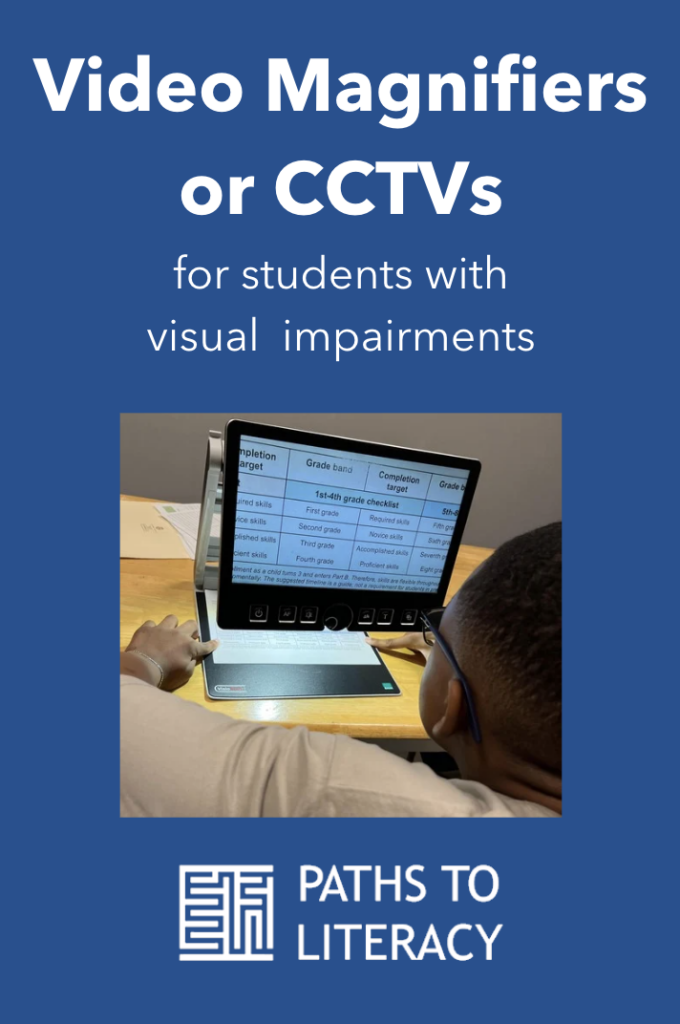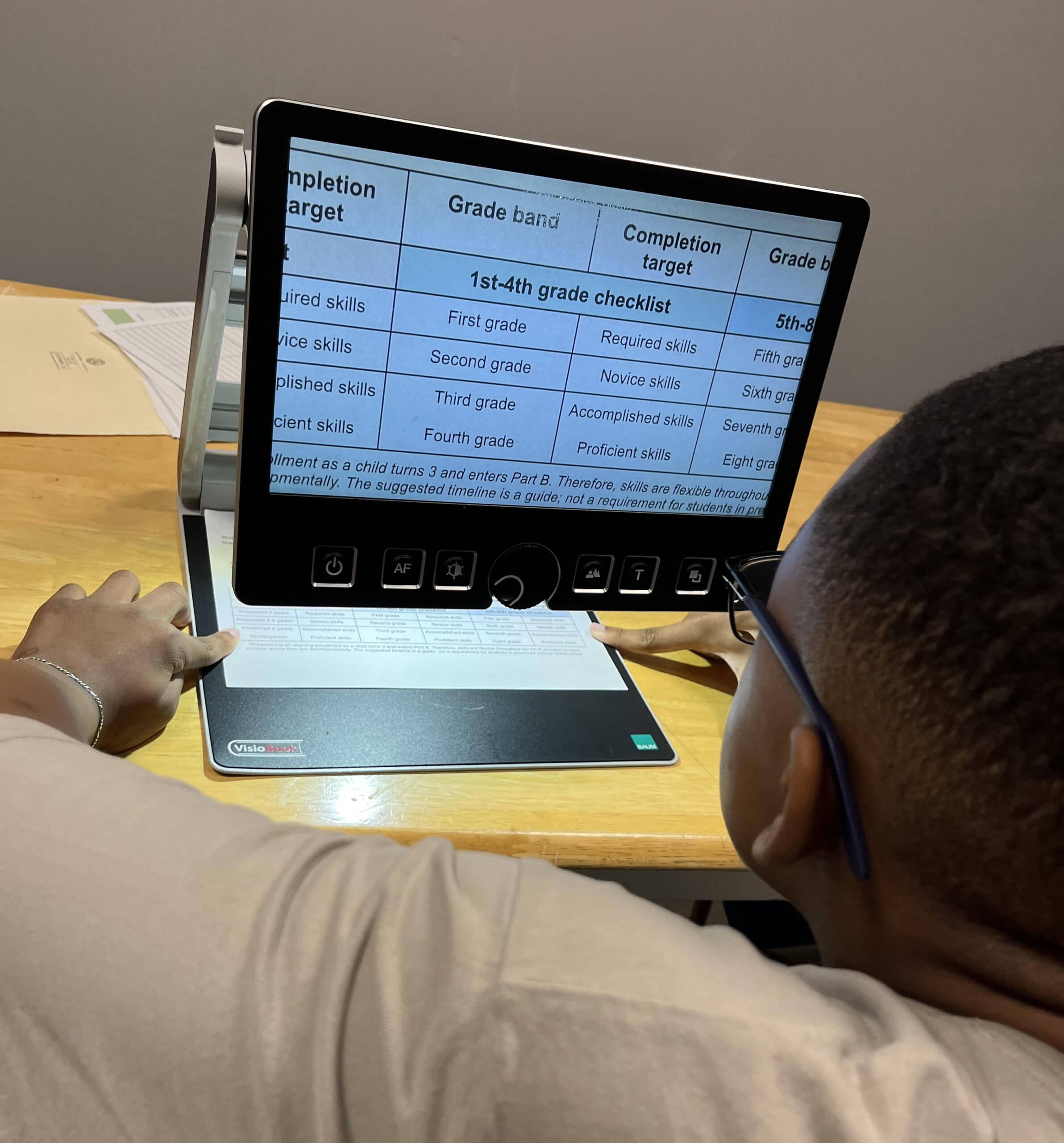By Jim Allan, Accessibility Coordinator
Texas School for the Blind and Visually Impaired
Editor’s note: Please see American Foundation for the Blind (AFB) webpage CCTVs/Video Magnifiers for current information on specific devices.
Contents of this page:
- Basic Features of CCTVs
- Advanced Features of CCTVs
- Types of CCTVs
- Questions for Choosing CCTVs
- CCTV Curriculum and Assessment
Basic Features of CCTVs
“A closed-circuit television (CCTV) system uses a stand-mounted or hand-held video camera to project a magnified image onto a video monitor or a television (TV) screen” (From AFB). A CCTV includes the following basic features:
- video camera with zoom lens (hand-held or stand)
- monitor or television (attached camera or external)
- provide enlarged image of material under camera
- magnification range of 2X to 60X+
- switchable polarity (black text/white background or white text/black background)
- controls for focus, magnification, brightness, contrast
- X-Y viewing table for easy material movement
- variety of monitor sizes (5 inches to 20+ inches)
Advanced Features of CCTVs
- black and white camera with color monitor (allows user selectable foreground and background colors)
- color camera with color monitor (view full color enlarged images)
- controls for foreground and background color, split image, color or b/w presentation
- line markers or windowing (horizontal and/or vertical screen masking that provides a user selectable viewing window for reading)
- motorized viewing table
Types of CCTVs
- hand-held camera connected to a monitor or TV
- self-contained portables
- stand-alone units
- camera units which share a computer’s monitor
- computer/scanner based text magnification
Questions for Choosing CCTVs
This form is followed by questions. Use the form to determine your needs first. Then evaluate various brands and types of CCTVS. Find the CCTV which is the closest match to your needs.
| CCTV Feature | Requirements | #1__________ | #2___________ | #3__________ |
| magnification range | ||||
| screen size | ||||
| camera (b/w or color) | ||||
| color monitor (y/n) | ||||
| polarity (y/n) | ||||
| X-Y table (y/n) | ||||
| portable (weight) | ||||
| windowing (hor/vert) | ||||
| adjustable monitor height | ||||
| tilt monitor | ||||
| lighting type | ||||
| split screen (hor/vert) | ||||
| inline (y/n) | ||||
| use with computer (y/n) | ||||
| change foreground – background colors | ||||
| use with computer | ||||
| other |
1. What is the magnification range?
2. What is the range of screen size?
3. Is the camera color or black and white?
4. Is it a color monitor?
5. Does is support polarity of the screen image?
6. Does it allow for windowing (horizontal and/or vertical)?
7. Does it have an X/Y table?
8. Does it have adjustable monitor height?
9. Does it have a tilt monitor?
10. Which type of lighting is used (fluorescent or incandescent)?
11. What kind of camera is used?
12. Does it support split screen (horizontal and/or vertical)?
13. What is the size and weight of the system?
14. Is it an inline system?
15. Will the CCTV accept video input from a computer?
16. Can the foreground and background colors be changed?
CCTV Curriculum and Assessment
- Steps for Completing the CCTV Assessment
- CCTV Line Drawing Assessment Tool (PDF) – Created by Karen McCall
- Low Vision Aids Training Checklists (Scottish Sensory Centre)
This article was originally published by Texas School for the Blind and Visually Impaired (TSBVI) and is reprinted here with permission.





